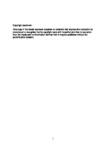Robert Rauschenberg and Modernism’s (other) Masculinity
| dc.contributor.supervisor | Bokody, Péter | |
| dc.contributor.author | Trepess, Harry | |
| dc.contributor.other | School of Society and Culture | en_US |
| dc.date.accessioned | 2022-03-02T13:24:38Z | |
| dc.date.issued | 2022 | |
| dc.identifier | 10439652 | en_US |
| dc.identifier.uri | http://hdl.handle.net/10026.1/18868 | |
| dc.description.abstract |
My project is concerned with understanding and identifying the possibility of self-censorship, within a queer theory framework, in Robert Rauschenberg's series of Combine works. Starting out by understanding ideas and theoretical concepts behind censorship (specifically Self-censorship, whether subliminal or acknowledged), through the work of previous scholars. Helping to differentiate the various forms censorship can take, to better establish a definition of what it means to self-censor. Which is vital for the ability of identifying the possible presence of this within Rauschenberg’s practice during the period he created the Combines. Previous iconographical readings, within a queer theory framework, should form a foundation to work from, to identify different elements within the work. Simultaneously creating an understanding of those elements identified as potential queer signifies contained in the works. The deconstruction of the combines seeks to comprehend those elements that might constitute Self-censorship, queer signifiers and historical or narrative changes which may have resulted from personal development or, more importantly, attacks on or suggestions of homosexuality levelled at Rauschenberg. After the deconstructions have been performed, combined with the data collected and appropriate analysis, identification of the changes which may have occurred can begin. These trends will then be examined and explicated via North American socio-historical sexual research and through a queer theoretical framework. After which, I shall attempt to draw out those elements that correspond to Self-censorship within Rauschenberg's art. It is hypothesised the self-censorship elements will be more prominent in his later works when Rauschenberg attempts to conform to societal expectations. The potential implications of this will be discussed. | en_US |
| dc.language.iso | en | |
| dc.publisher | University of Plymouth | |
| dc.rights | Attribution-NonCommercial 3.0 United States | * |
| dc.rights.uri | http://creativecommons.org/licenses/by-nc/3.0/us/ | * |
| dc.subject | Robert Rauschenberg | en_US |
| dc.subject | Rauschenberg | en_US |
| dc.subject | Modernism | en_US |
| dc.subject | Post Modernism | en_US |
| dc.subject | Censorship | en_US |
| dc.subject | Self Censorship | en_US |
| dc.subject.classification | ResM | en_US |
| dc.title | Robert Rauschenberg and Modernism’s (other) Masculinity | en_US |
| dc.type | Thesis | |
| plymouth.version | publishable | en_US |
| dc.identifier.doi | http://dx.doi.org/10.24382/965 | |
| dc.identifier.doi | http://dx.doi.org/10.24382/965 | |
| dc.rights.embargodate | 2022-09-02T13:24:38Z | |
| dc.rights.embargoperiod | 6 months | en_US |
| dc.type.qualification | Masters | en_US |
| rioxxterms.version | NA |
Files in this item
This item appears in the following Collection(s)
-
01 Research Theses Main Collection
Research Theses Main



